The best potato varieties: “Nayad”, “Madeira”, “Chaika” and others
There are more than 50 thousand types of potatoes in the world, 283 of them are approved for use in Russia. But how to choose the best option for yourself? We have collected information that will help you understand this diversity and choose the appropriate varieties for planting, based on their pros, cons and advice from experienced gardeners.
General description and characteristics of early, late and mid-late varieties
Early potato varieties are classified according to ripening dates as follows:
- ultra-early ones ripen within 45-55 days;
- early ripening requires 50-60 days to reach ripeness;
- mid-early ones are used for food after 60-85 days.
Late varieties according to ripening dates are distributed as follows:
- mid-season tubers are harvested after 85-95 days;
- medium-late ones are consumed after 95-110 days;
- later varieties require 95 or more days to reach ripeness.
When choosing seed material, it is recommended to be guided by how quickly the variety ripens, where it comes from, and in what climatic conditions it will be planted. When considering late potato varieties for planting, read the description of the crop and look at photos of the future harvest so as not to make a mistake in your choice.
Important! Tubers of early ripening varieties and hybrids are rarely subject to fungal infections.
When choosing a variety for planting in the difficult climatic zone of the Moscow region, you should remember about protection from pests and diseases.In this region, it is better to plant early and mid-early potatoes, since late ones may not have time to ripen.
In the southern regions of Russia, late varieties are cultivated, since summer weather lasts there from May to September.
Chemical composition, trace elements and vitamins
The main indicator of the quality and nutritional value of potato tubers is their chemical composition. The amount of water in early potatoes is 78-87%, in mid-ripening potatoes it ranges from 73 to 82%, and in late potatoes – 70-83%. The rest is the proportion of dry matter.
The main component of dry matter is starch, its share in grams:
- for early varieties – 9.7-18.5;
- for mid-season - 14.9-20.6;
- The largest amount is contained in late varieties - 12.3-26.3.
The amount of sugar, proteins, acids and vitamins is presented in the table:
| Potato varieties by ripening time | Sugar, g | Proteins, g | Acids, g | Vitamin C, mg | Energy value, kcal |
| Early | 0,5-1,3 | 0,7-1,6 | 0,1 | 15-18 | 61 |
| Average | 0,5-0,8 | 0,8-2,6 | 0,1 | 16-20 | 76 |
| Late | 0,5-0,9 | 0,7-2,1 | 0,1 | 12-17 | 80 |
Potato tubers also contain mineral salts - 1%, fiber - 1%, fats - 0.1%, organic acids - 1.6%.
Characteristics of tubers and yield
The most popular early varieties in Russia are Timo, Impala, Zhukovsky early, Kholmogorsky, Gala, Romano. They are distinguished by a short growing season and strong immunity, that is, resistant to diseases. A harvest of 35-60 tons is obtained from each hectare. The tubers are medium-sized, weighing from 80 to 190 g.
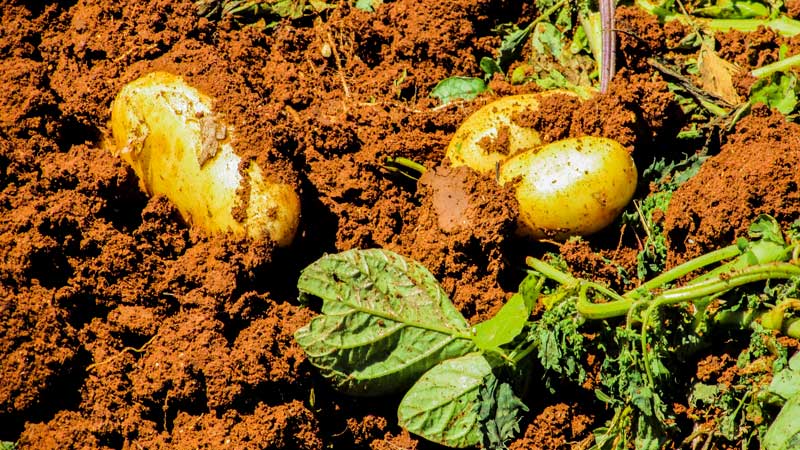
Late: Asterix, Saturn, Zarnitsa, Picasso. These potatoes contain a lot of starch, so the tubers boil quickly. The harvest is stored for a long time. The weight of the tubers ranges from 60 to 150 g.
The yield of late potatoes reaches 300 centners per hectare, depending on the variety and climatic conditions.Due to the long growing season, late species are susceptible late blight and scab.
When choosing planting material for mid-season varieties, it is necessary, first of all, to pay attention to resistance to late blight disease, since the growing season coincides with the timing of its spread. The harvest of mid-season potato varieties is harvested and stored in August.
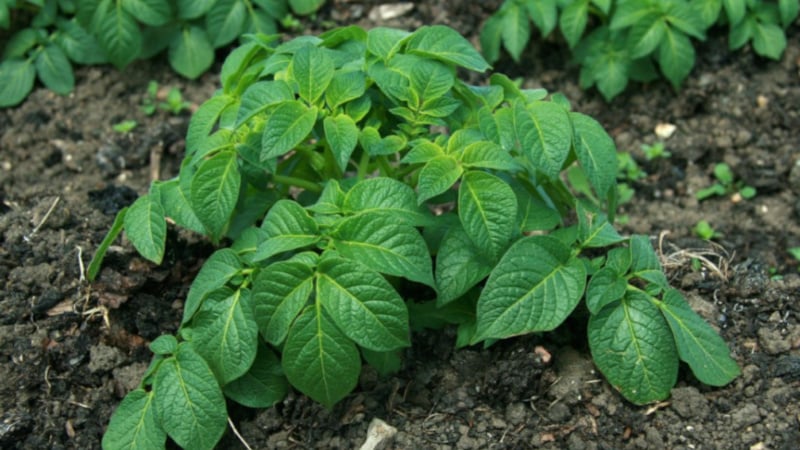
Region for cultivation and planting dates
For each climatic zone, the types of potatoes suitable for cultivation are zoned. Only if the planting material is correctly selected can you achieve a good harvest and not waste time and energy.
Moscow region
Belongs to the zone of problematic agriculture. Summer here is not always warm and dry. The climate is moderate continental, its main distinguishing features are mild winters and rainy summers with night and day temperature changes. The first frosts may occur in early September. In such conditions, early varieties should be planted. The best for this climate: Impala, Zhukovsky early, Spring, Udacha, Sineglazka.
It is recommended to begin preparing planting material on the 20th of March. Tubers are germinated until sprouts appear at a temperature of +20...+24°C. Then they are placed in a cool place for hardening.
Reference. Folk omens advise watching dandelions: as soon as the first buds appear on these plants, this means that the ground has already warmed up enough for potatoes to be planted in it.
Siberia
The region has a sharply continental climate with spring frosts and a short summer with heavy rains in August. Early and mid-early varieties have been bred for this region: Tuleevsky, Nevsky, Adretta, Impala, Luck, Lyubava. Tubers in Siberia are planted from mid-May to mid-June.
Siberia is located in three time zones, so there are no average potato planting times for such a vast territory. Local summer residents are guided by the time of the last frost on the ground.
Many people follow folk signs and look at a birch leaf not far from the site. If it has reached the size of a penny, this means that the soil has warmed up to the required temperature and it is time to plant potatoes.
To ensure that the seedlings germinate quickly and receive as much spring sun as possible, in Siberia the seed material is germinated before planting. The harvest is harvested in early September.
Ural
It is famous for its short warm period, so early and mid-season potatoes are cultivated here: Good luck, Timo, Riviera, Impala, Gala, Nevsky. Frosts are a common occurrence here even in June.
The best time to plant potato tubers in this region is June 10-12, when the danger of frost has already passed. In the Urals, it is customary to plant potatoes under straw, which, being above the plantings, releases a large amount of nitrogen. In this case, the bushes grow powerful and the tubers grow large.
Central Russia
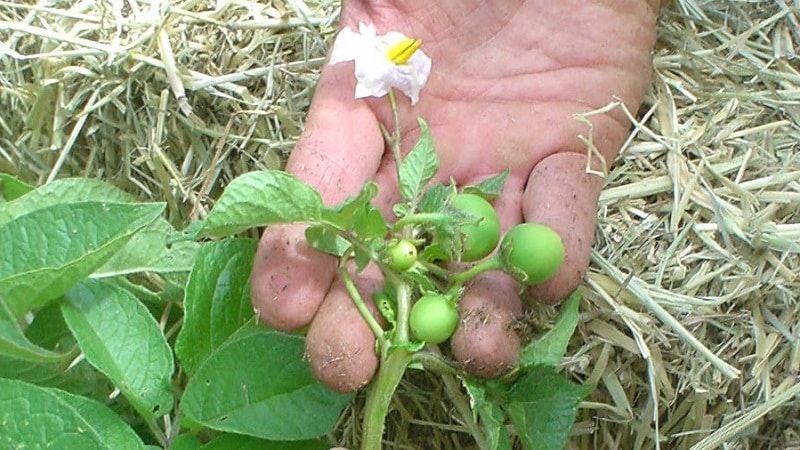
This region is characterized by a temperate climate and high humidity. It is summer-like warm here from May to October. Varieties developed for these areas:
- early - Bellarosa, Impala;
- middle ones - Rosara, Sante, Slavyanka;
- late – Picasso, Zhuravinka.
Potatoes in the middle zone are planted at the end of April - beginning of May in soil heated to 8°C.
South
For the south of Russia, hot summers and lack of moisture are common. In this region, they manage to harvest early varieties twice a season: Udacha, Impala, Alena, Zhukovsky.
Late varieties are grown for winter planting.: Tempo, Picasso, Nikulinsky. The warm summer period in the south of the country lasts from March to October.
The best early, late and mid-late varieties
To decide on the choice of variety for planting, we suggest that you familiarize yourself with the main characteristics of the most popular potatoes.
Naiad
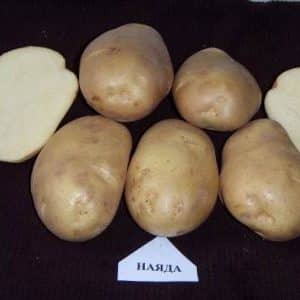
Mid-season, unpretentious, nematode and cancer resistant potatoes.
Moderately susceptible to late blight on tops and resistant to tubers. Moderately resistant to scab virus. Suitable for cultivation in most regions of Russia.
It has large oblong tubers, of which there are 6-10 under the bush. Productivity is 193-370 c/ha.
Growing regions: Northern, Northwestern, Central, Volga-Vyatka, Central Black Earth, Ural, Far Eastern.
Madeira
Mid-early table variety. The tubers are oval, smooth, weighing 106-136 g. The average yield ranges from 202 to 481 c/ha. Resistant to scab, brown spot, potato cancer.
Moderately resistant to late blight. Unpretentious in cultivation. The main feature of the variety is that it requires careful digging of the soil. Madeira potatoes easily absorb nitrogen, so you should feed its nitrogen fertilizer content is lower than other varieties.
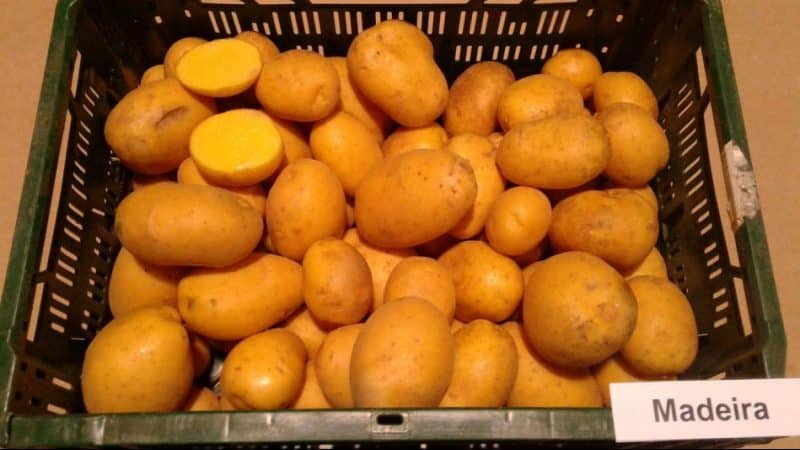
Virgo
This variety has a pink color and thin skin. The tubers are elongated, with a flat, smooth surface, without eyes, weighing 100-150 g. Virgo potatoes are resistant to diseases and pests.
It has a high yield: up to 1 kg of tubers are obtained from one potato bush per season. It is undemanding to soil quality, so it is grown everywhere in Russia.
Gull
Medium late variety. It is planted in May and harvested in September.The tubers are yellow, oval-shaped, with eyes, weighing from 70 to 125 g. The main advantage is that it is perfectly stored.
The average yield is 240-400 c/ha. Chaika potatoes are suitable for growing in the Volga-Vyatka and North-Western regions. The variety is resistant to potato blight, but suffers from late blight and scab. Seeds should be treated with fungicides before planting.
Atlant
Late variety. Suitable for cultivation in the Central region. The average yield is 164-234 c/ha. The tubers are oval-round, with medium-deep eyes, weighing 90-119 g. The harvest is perfectly stored.
Potatoes are resistant to the pathogen of potato cancer and golden nematode, moderately susceptible to late blight on tops and tubers. Resistant to wrinkles, streaking and leaf curl. Suitable for growing on all types of soil.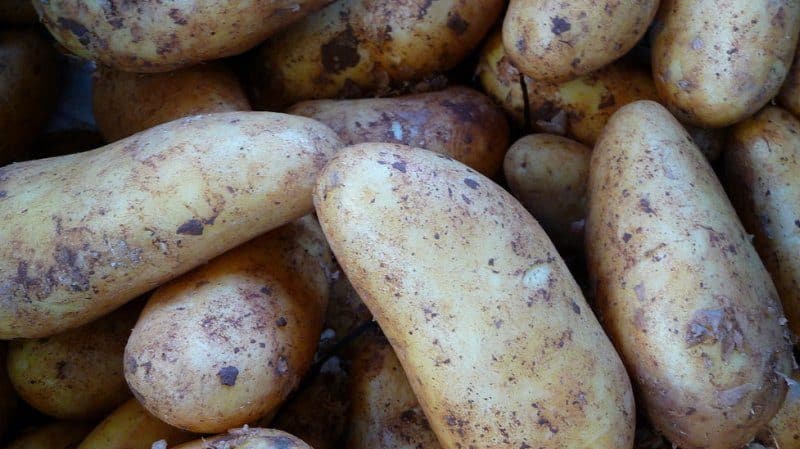
Pace
Late ripening variety. The tubers are large, weighing from 100 to 250 g, with small eyes. Under one bush, 7-9 tubers of different sizes are usually formed. Potatoes tolerate transportation well and are stored for a long time.
Tempe potatoes are grown in well-irrigated fields as they are drought tolerant. Under favorable conditions, the yield reaches 550 c/ha. The variety is resistant to late blight and cancer, but is susceptible to viral diseases. Treatments against wireworms, nematodes and Colorado potato beetles are required.
Asterix
Elite universal variety with a late ripening period. It has medium-sized, oval-shaped tubers, weighing 80-120 g. From 10 to 12 tubers are formed under each bush.
Resistant to cancer, fomosis, leaf curl, late blight of tops and tubers. It is also not affected by nematodes. But the Asterix potato is susceptible to the Y virus.Therefore, bushes of this variety must be treated with insecticides against aphids and leafhoppers.
Agria
Mid-late potato recommended for cultivation in the Central and Central Black Earth regions. The tubers are elongated oval, yellow in color, with superficial eyes. Weight – 72-135 g.
The variety is resistant to potato canker and golden nematode, but is susceptible to late blight and common scab. It is moderately affected by leaf curling and is slightly damaged by mosaic.

Krinitsa
Mid-season variety. The average yield is 498 c/ha. It has round yellow tubers. Potatoes Krinitsa (Krynitsa) are resistant to nematodes and moderately resistant to viruses, late blight, and common scab.
Multi-tuberous, therefore, when growing, it requires more sparse planting. Loves mineral feeding. In the second half of the growing season, in case of drought, additional irrigation is required.
Purple Haze
Mid-season variety with a powerful root system and 10-15 tubers per bush. It has a high yield - 182-309 c/ha. It can be stored for a long time. Resistant to potato blight and leaf roll virus.
Moderately susceptible to late blight, banded and wrinkled mosaic. Susceptible to nematode. Prefers fertile soils; in poor, heavy soil the yield is significantly reduced.
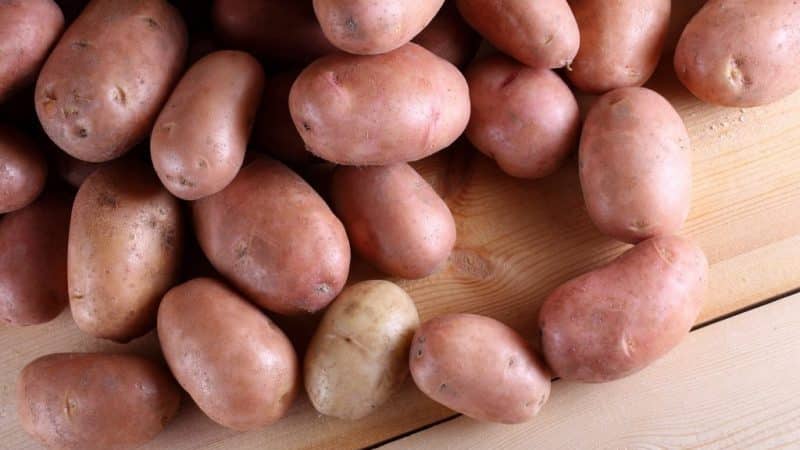
Advice from experienced gardeners
When planning to grow potatoes, it is useful to seek advice from experienced gardeners.
We invite you to find out their recommendations:
- Plant several varieties at once that ripen at different times. After harvesting, you can decide which variety is most suitable for you.
- When planting, pay attention to zoned varieties, test them first, as they are most suitable for your region.
- It is permissible to plant potatoes in the same bed only after three years. But you can cheat: in the spring, as soon as the top layer of soil thaws, plant mustard, oats or rapeseed there. By mid-May, these herbaceous crops will have time to grow, and you will only have to remove them 10 days before planting the potatoes. In August - September, after harvesting, you can plant oats, peas, and mustard on these beds. This way you will always plant potatoes after grass crops. And this will have a beneficial effect on its health and productivity.
- The smaller the potato tuber, the larger the harvest will be. Plant medium-sized tubers or cut large potatoes so that there are several eyes on each part.
- By breaking the tops two weeks after the start of flowering, you will get large and tasty potatoes, since the nutrients will not go to the development of leaves, but to the tubers.
- Do not plant sunflowers next to potatoes - this plant has a depressing effect on the vegetable.
Reviews of early, mid-late and late varieties
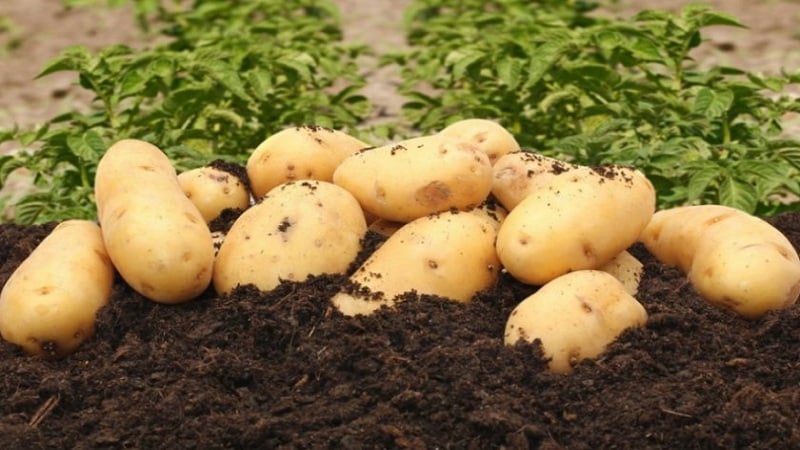
Experienced gardeners help beginners by leaving reviews and sharing their experience of growing different varieties of potatoes.
Sergey, Tver: «I have been growing the mid-season Naiad potato variety for several years now, after I saw a photo of one farmer’s crop, and then read the description and reviews about it. I’m happy with everything about these potatoes, I especially like the large tubers - the harvest is harvested quickly and without shaking up all the soil around the bush.”
Anna, Pskov: “The soil on my plot is depleted, so I planted Madeira - it doesn’t need a lot of nitrogen, and in general it’s an unpretentious variety. I got a good harvest without much effort.”
Irina, Krasnodar: “Last year I planted a late potato variety, Atlant, after reading its description and reviews about it and looking at the photo. I was surprised that he wasn’t sick all summer. I planned it for winter storage, it stayed until February. I sorted through it often - there were almost no spoiled tubers.”
Conclusion
When choosing a variety for planting on a plot, it is initially determined which potatoes will have time to ripen in the region - early, mid-season or late. Then the positive and negative aspects of different varieties, productivity, soil requirements, and disease resistance are compared.
A complete analysis allows you to select potatoes that will give a rich harvest and will not bring much trouble.